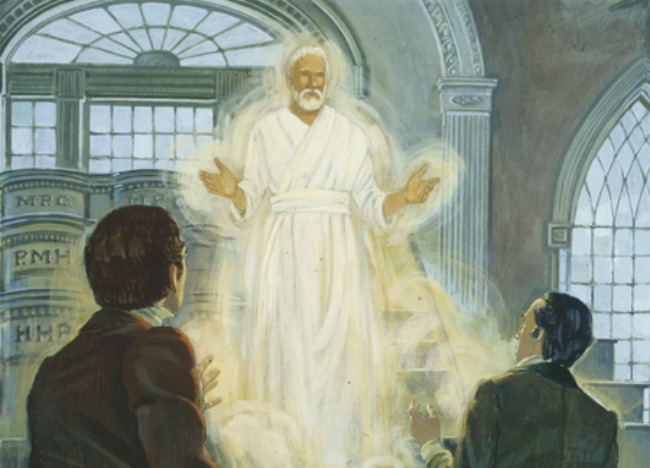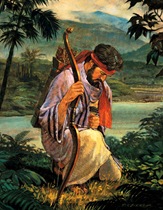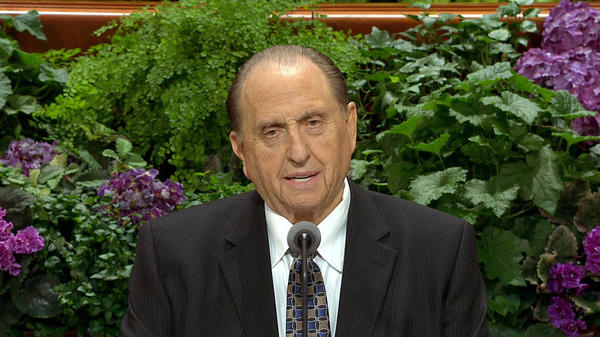Question
Gramps,
I am having confusion about Elias. I know that Elias is a man who lived during the time of Abraham and nothing more is known about him. Elias is also a name given to prophets who prepared the way, such as John the Baptist. Elias, in the New Testament, means Elijah. I learned that during the temple dedication of the Kirtland temple, that Elias was one among others who appeared to Joseph Smith and Oliver Cowdery. I’ve read this Elias in the temple was really John. Why wasn’t he just called John?
Cara
Answer
Dear Cara,
Thank you for your excellent question. The doctrine of Elias is a complex and somewhat confusing subject, one we would not understand fully without the teachings of the Prophet Joseph Smith. Before I directly answer your question about the Elias who appeared to Joseph Smith and Oliver Cowdery in the Kirtland Temple on 3 April 1836, I wanted to address the overall subject of the doctrine.
The Bible Dictionary provides a good explanation with many references. I don’t want to cover all of them here, but wish to refer readers to this excellent source. It brings up these points, summarized below:
- Elias is used in the New Testament as a Greek form of Elijah (Luke 4:25-26, James 5:15, Matthew 17:1-4)
- At the Mount of Transfiguration, according to the Joseph Smith Translation of Mark 9:4, we learn that the Elias there was Elijah, who appeared with Moses and John the Baptist.
- Elias is also a title, office, or role that is assigned to various ministers. Their role is to act as a preparer of the way or a forerunner.
It is in this third use of Elias, as a title or office, that is interesting and confusing. When the Pharisees came to John the Baptist, they asked if he was Elias? John’s answer points to two Eliases, one who would “restore all things” and himself, the “preparer of the way” (See JST John 1:22-24). John the Baptist clarified that he was the “voice of one crying in the wilderness,” of whom Isaiah prophesied.
Doctrine and Covenants 27:5-9 offers some insights about the Elias who would restore all things. Specifically, verse 7 mentions both John the Baptist (the preparer of the way) and the restorer of all things. It says the “restorer” Elias gave Zacharias (John the Baptist’s father) the promise he would have a son, and indicated the name that he should give the child. Luke chapter 1 tells us that the being that announced this to Zacharias, as he ministered in the temple, was the angel Gabriel. Joseph Smith later taught that the mortal prophet Noah was indeed the angel Gabriel.
“‘… Noah, who is Gabriel; he stands next in authority to Adam in the Priesthood; he was called of God to this office, and was the father of all living in his day, and to him was given the dominion. These men held keys first on earth, and then in heaven. … ’ [Smith, Teachings, pp. 157–58.]
This brings us to the fourth incident of the use of the name Elias—the one who appeared in the Kirtland Temple. According to the Bible Dictionary, “A man called Elias apparently lived in mortality in the days of Abraham, who committed the dispensation of the gospel of Abraham to Joseph Smith and Oliver Cowdery in the Kirtland (Ohio) Temple on April 3, 1836 (D&C 110:12). We have no specific information as to the details of his mortal life or ministry.”
So the direct answer to your question about the personage who appeared in the Kirtland Temple is that it was not John the Baptist at all. If you recall, John the Baptist appeared in May 1829 to Joseph Smith and Oliver Cowdery to restore the Aaronic Priesthood and the associated keys, including baptism by immersion for the remission of sins. In this role, once again, he acted as a forerunner for Peter, James, and John, acting under their direction, to prepare the way for the restoration of the Melchizedek Priesthood.
We don’t know any specifics about the individual named Elias who appeared to Joseph and Oliver in the Kirtland Temple. We can be assured that it was part of the prophesied restoration of all things which included Moses’ keys to gather Israel, Elias’ keys to the dispensation of the gospel of Abraham and the Abrahamic covenant, and Elijah’s keys of sealing the generations. Those keys, along with the keys of the Priesthood delivered by the ancient apostles Peter, James, and John, provided the power and authority necessary to bring the Lord’s work to its current state.
Thanks again for a great question on this very interesting topic!
Gramps







